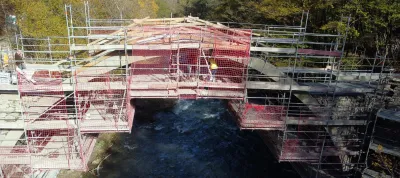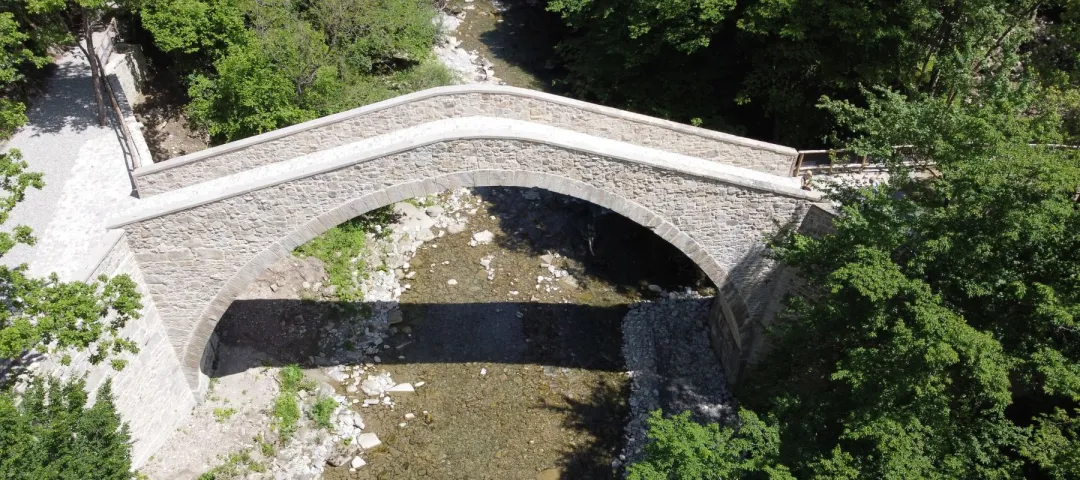General information
RDP Priority
- P6. Social inclusion and local development
RDP Focus Area
- 6B: Local development
RDP Measure
- M19: LEADER/CLLD
Beneficiary type
- Public authority / body
Summary
The project aimed to restore an old stone bridge from the mid-19th century that connects two small municipalities in the Emilia-Romagna Apennine area. The Castrola bridge over the Limentra di Treppio creek required urgent restoration due to erosion and earthquake damage.
The municipalities of Castel di Casio and Camugnano, along with three hiking associations, collaborated to submit an application to the Appennino Bolognese LAG. The project beneficiary was a local river rehabilitation consortium that successfully completed the restoration works on the bridge.
Results
- The recovery of the bridge has helped strengthen the residents' sense of identity.
- Restoring the bridge will attract more tourists to the area, especially those walking along nearby popular hiking trails like La Via degli Dei. This promotes sustainable tourism in the region.

Promoter
Consorzio della Bonifica Renana
Funding
Total budget 500 000 (EUR)
EAFRD: 192 381 (EUR)
National/Regional: 253 771 (EUR)
Private/own: 53 848 (EUR)
Resources
Documents
Context
For centuries, mountain areas have been crossed by pilgrims, merchants and workers on foot trails, often requiring the crossing of rivers and creeks. Some ancient stone bridges are still preserved in Italy's interior regions, such as the Apennines between Emilia-Romagna and Tuscany in central Italy.
One of these bridges, the Castrola bridge over the Limentra di Treppio creek, likely built at the end of the 12th century and renovated in the mid-1800s, was in urgent need of significant restoration due to erosion and earthquake damage. The municipalities of Castel di Casio and Camugnano, along with three hiking associations, collaborated to submit an application to the Appennino Bolognese LAG. The final beneficiary was a local river rehabilitation consortium that successfully carried out the restoration works on the bridge.
Objectives
The project objectives were to:
- Restore a 24-meter-long historical stone bridge.
- Ensure safe passage for hikers and cyclists along a historic trail connecting two regions in central Italy.
- Promote slow tourism activities in the surrounding areas.
Activities
Project activities included:
- Restoring the connection between arches and vaults by filling cracks in the wall structure.
- Consolidating the bridge’s vault through reinforced restyling of the intrados using cables anchored to the shoulders and tensioned.
- Reinforcing the gables and reconstructing the parapets by reassembling the parapets and reinforcing the wall facings.
- Restoring the pavement and installing new parapets by reconstructing the flooring and watersheds for water regulation and installing new parapets.
Main results
- The 24-meter-long, 10-meter-high stone bridge was successfully restored and reinforced within a six-month timeframe.
- The restored bridge now provides access to three main hiking routes, each approximately 500 kilometres long: Alta Via dei Parchi, Via della Lana e della Seta and Linea Gotica.
- Additionally, 11 kilometres of trails leading to the bridge on both sides were enhanced with funding from the two municipalities involved.
- The restoration of the old bridge has reinstated a strong identity symbol for the local community.
- This intervention will play a crucial role in promoting activities in the expanding hiking tourism niche.
Key lessons
The project exemplified positive collaboration between two municipalities and three associations, all committed to working together to promote sustainable tourism activities in the future.
“It is of fundamental importance to properly inform and involve every key actor at local level to gain short- and long-term support for this type of action.”
